As temperatures rise, our dogs need an extra dose of attention to help them keep cool. Just imagine running around your local dog park in a woolly jumper when it’s above 20 degrees – it’d be unbearable! With all that fur, you can see why it’s important we keep our dogs hydrated and provide shade to help them cool down.
It’s important for dog owners to have the right information so they can keep their dogs safe this summer. Below, we reveal the warning signs you should look out for, as well as the essential (and a few creative!) ideas for how to keep your dog cool in hot weather.
How to keep dogs cool in hot weather
1. Never leave your dog in a hot car
Of course, responsible dog owners everywhere know that hot, parked cars are no place for a pooch, but sadly it keeps happening. So it’s worth saying again – it’s never okay to leave a dog in a parked car on a hot day – even if you’re popping into the shop for two minutes. Your dog could very quickly become dangerously overheated and there’s even a chance they die of heatstroke in less than 15 minutes, which really shows how quickly temperatures can soar.
If it’s only 21 degrees outside, (which is relatively mild compared to peak summer heights!) in only a matter of half an hour the inside of your car will hit 40 degrees – a temperature far too hot for your dog to endure. By that time, a dog left in a car will be dangerously dehydrated and will likely suffer heatstroke. Unfortunately, as soon as a dog shows signs of heatstroke it’s often too late.
If you do spot a dog in a parked car on a hot day, here are a few tips on what you should do.
2. Make home-made frozen dog treats

Homemade frozen dog treats are a great way to lower your dog’s body temperature from the inside, and of course, your pooch will love these tasty pupsicles too! Check out our 10 DIY summer treats for your dog. They only take minutes to make and will stock your freezer for a good couple of weeks.
Top tip: Frozen treats, along with ice and iced-water are safe for dogs to eat and enjoy safely – as long as they enjoy them in moderation. If a dog eats or drinks any type of food or drink too quickly, this can lead to bloating. Ice or iced water are not known to be more dangerous than other kinds of food; bloating is usually caused by a large volume of food or very fast eating.
3. Fill up a doggy paddling pool
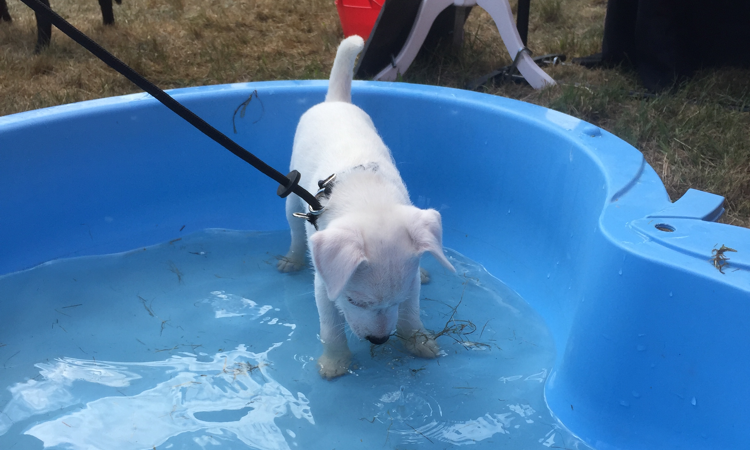
A cheap toddler pool will give your dog a great spot to cool off from the bottom up. Place the pool in a shady area and let your dog dip their paws or sprawl out in comfort. Fill it with toys to encourage your somewhat shy pooch if it’s their first time taking a splash.
4. Keep your dog hydrated
One of the most important things you can do in the hot weather is offering your dog constant access to a fresh, cool water source. Keep a close eye on your dog’s water bowl and top it up regularly. When you’re heading out on walks, carry a water bottle and a collapsible dish and take regular breaks to let your dog rehydrate.
5. Walk your dog when it’s cooler
Avoid taking your dog out when the sun is at its hottest. Stick to early morning and late evening walks when the sun is lower in the sky and the pavements have cooled down. If the pavements are still slightly too hot later in the day, consider using booties to protect your dog’s paws from burns and cracking.
6. Regulate the temperature in your home
Your home can be the coolest place for your dog to relax, but improving circulation will help bring temperatures down further. Open windows and doors in your home to increase airflow. If the sun shines directly into your living room, close the curtains to stop inside temperatures rising. You could also use a fan to circulate the air and provide a cooling breeze.
7. Provide shade to keep your pooch out of the sun
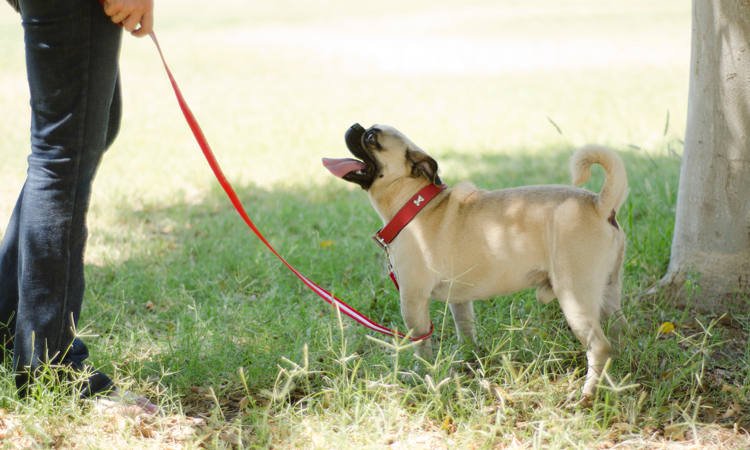
Whether out and about or in your garden, your dog will need protection from the sun’s harsh rays. If your garden is a suntrap, consider getting a parasol or a doggy tent they can curl up under.
8. Offer a cold towel
Give your dog a cool surface to lie on by soaking a towel in cold water and stretching it out on the floor. You could even drape the towel over your dog’s back to cool their whole body directly.
9. Buy a few summer doggy essentials
There are various cooling aids you can buy from your local pet store to help keep your dog cool. A cooling mat, cooling jacket or a cooling bandana are all great options to help you fight the heat.
You can also buy dog-friendly sun cream to protect your pooch from sunburn – yes dogs can get sunburn! Dogs with white or short coats are susceptible to burning, and noses and ears are particularly prone to being burnt in all dogs. As dog’s paws are inclined to become dry and cracked during hot weather, consider getting some paw balm to soothe and hydrate your dog’s paws.
10. Keep on top of grooming
If your dog is double-coated, you may be tempted to cut back all that fur to help them stay cool. But shaving your double-coated dog can cause overheating. Those second-layer guard hairs that keep your dog warm in winter also protect them from the heat in summer. The fur provides an insulating effect and helps air circulate closer to the skin. It also protects your dog from sunburn.
So rather than break out the clippers, brush your dog regularly to remove mats and tangles to help improve air circulation to the skin. This will also help thin the undercoat but leave the protective guard hairs intact.
Can a dog get too hot?
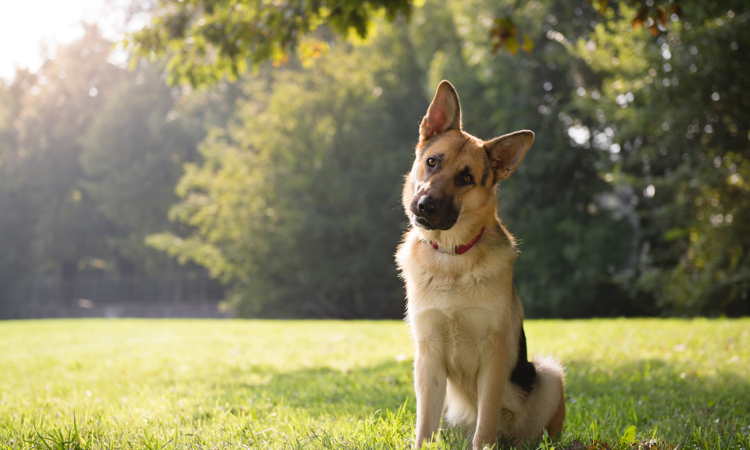
Dogs feel the heat far more than we humans do, so what may feel warm to us can feel sweltering to our pooches. Dogs cope with getting hotter by panting, which helps to cool them down. But it’s not always enough, and can put a huge strain on their bodies. We’re able to sweat which helps us stay cool, but dogs only have a tiny surface area of their bodies where they can sweat, only their paws and nose. As things heat up, our dogs can struggle to regulate their body temperature which can easily cause overheating. And in some unfortunate cases, this can even be fatal.
In one heart-breaking story, an owner took their 5-year-old dog on a walk at 9 am when the temperature was already around 21 degrees. Unfortunately, the dog soon showed signs of being unwell and later died of heatstroke at their local vet. We know these stories are very upsetting, but it’s important to be aware of the serious impact these high temperatures can have on our dogs.
The RSPCA received almost 8,000 calls last year about dogs overheating. A massive 241 of those calls were made across only six days during the peak of British summer heat. UK weather can be erratic at the best of times; a difference of 10 degrees from one day to the next is not uncommon. These random spikes in temperature can make it even more difficult for our dogs to adjust and cope.
What temperature is too hot for a dog?
It’s difficult to say an exact temperature that becomes unsafe, as every dog will have different heat tolerances. Instead, it’s important to be able to spot the signs so you know when your dog might be overheating or becoming dehydrated.
If you’re wondering what temperature is too hot to take your dog out for a walk, there’s a quick and simple test to see if the pavements have gotten too hot for your dog’s paws. Simply pop outside to find a spot of pavement that’s been in the sun for a while. Place the back of your hand on the pavement: if it’s too hot to hold your hand there for five seconds, it’s too hot to walk your dog. It’s best to keep them inside, or in your garden if that provides ample shade, with a few cooling aids and wait until the heat subsides.
If your pooch is a creature of routine, they might not understand why their daily walk has been rescheduled. Avoid letting any high energy dogs get too bored by keeping them entertained with indoor games like hide and seek, find it, or if your garden allows space, why not fill up a paddling pool for your pooch to splash around in?
How can I tell if my dog is dehydrated?
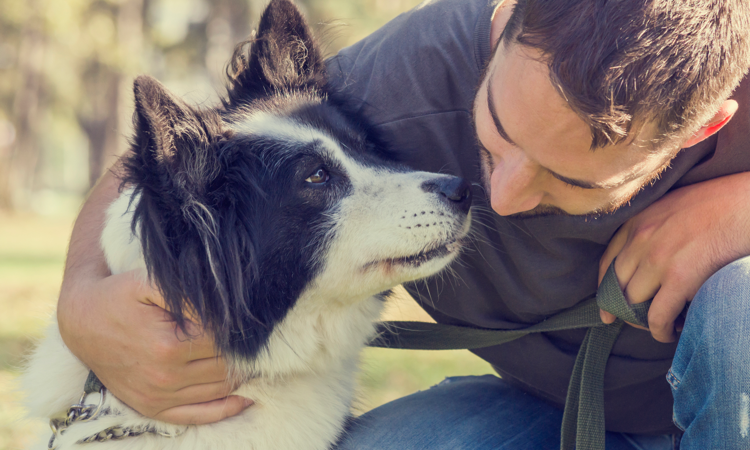
If your dog is dehydrated, this can make for a very poorly dog and can even become life-threatening. But if you’re able to recognise the signs you can act fast and try to reverse any damage. If you suspect serious dehydration it’s always best to seek advice from your vet as they’ll be able to advise how quickly your dog will need professional attention. But since it’s always best to be informed, here are those important warning signs you should watch out for in hot weather:
- Extreme lethargy
- Sunken, dry eyes
- Dry nose and gums
- Excessive panting
- Loss of appetite
If you’re still not sure whether your dog is dehydrated, gently pinch the skin on the top of your dog’s neck and it doesn’t snap back quickly, this can be a sign of dehydration.
The best way to avoid dehydration is to ensure your dog drinks plenty of water throughout the day. If it’s blazing hot and you think your dog isn’t drinking enough, encourage them to rehydrate by adding a bit of interest. Mix some reduced-salt chicken stock into their water or throw in a few ice cubes. You could even drop a few treats into a bowl of water so they lap up the liquid at the same time.
Which dogs are best suited for hot weather?
Breeds with shorter coats and longer snouts are generally best suited to warmer conditions. Beagles, Dobermans, Chihuahuas, Vizslas, Greyhounds, Whippets and Terrier dog breeds are all pretty well adapted to hotter climates. Some dogs breeds were originally bred in for warmer countries and are naturally accustomed to the heat. Breeds such as Basenjis, Pharaoh Hounds and the American Water Spaniel are usually better than most when the sun’s out.
Their longer snouts help them pant easily to release heat, and their short coats are the perfect length to keep them cool while offering protection from sunburn. Whether your dog is a heat lover or not, it’s important to take necessary precautions during the summer months. Always provide access to fresh, cool drinking water and plenty of shade while in your garden and out exploring.
Why is my dog so hot all the time?
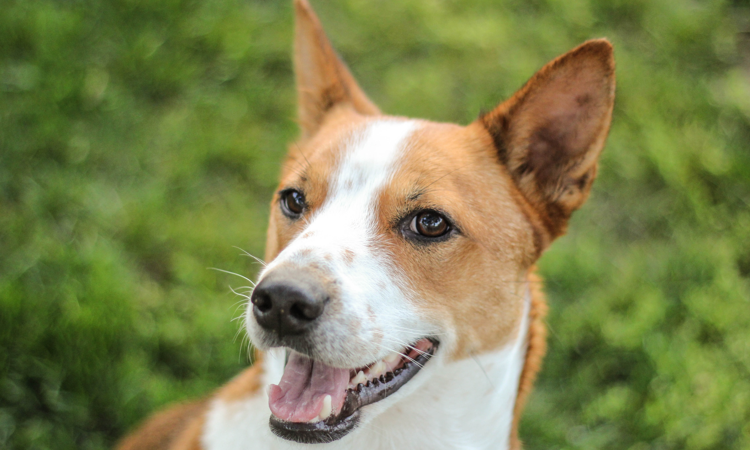
Basenjis are better suited to hot weather.
If you notice your dog pants a lot or seems too hot fairly often, it could be down to the breed. Dogs with longer coats and shorter snouts have a harder time keeping cool. It’s particularly tough going for the pug-faced beauties of the world, also known as brachycephalic dogs, which includes Boston Terriers, Pugs and French Bulldogs.
Giant dog breeds like Newfoundlands and St Bernards have thick coats and require moderate to ample exercise. But in hotter weather they’re unable to stand the heat for extended periods and struggle to keep themselves cool. Younger and older dogs can also struggle to regulate their body temperature as well as dogs suffering from obesity.
How can I tell if my dog is too hot?
If you think your dog is too warm, try one of the cooling methods below. Or consult your vet immediately if you notice signs of heatstroke. A few symptoms of heatstroke include:
- An elevated body temperature (between 38 and 39 degrees Celsius is normal)
- Excessive drooling
- Excessive panting
- Dehydration
- Rapid heart rate
- Reddened gums
- Urinating tiny amounts or not at all
- Muscle tremors
- Seizures
- Staggering
- Vomiting blood
If you suspect your dog is suffering heatstroke, you could save your dog’s life by taking immediate steps to cool your dog down. One study revealed that dogs who were given initial cooling treatments for heatstroke stood a much higher chance of survival.
Move your dog to a cool environment straight away. Cool your dog quickly but gently by covering your dog with towels soaked in lukewarm water. As timing is crucial, your dog will need vet care as soon as possible. Move your dog to the car while draped in cool towels and partially open the windows to create a cooling breeze.
How are you keeping your dog cool this summer? Let us know in the comments below or head over to Facebook and Twitter to join the conversation. Don’t forget to tag @DogBuddyCo so we can see your stories and tips.